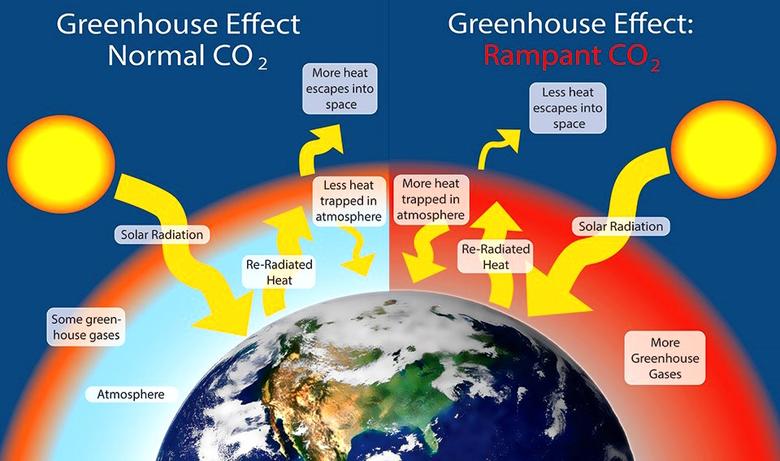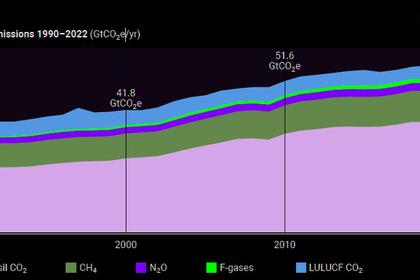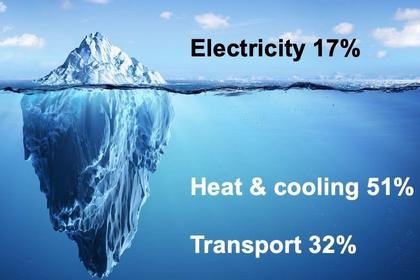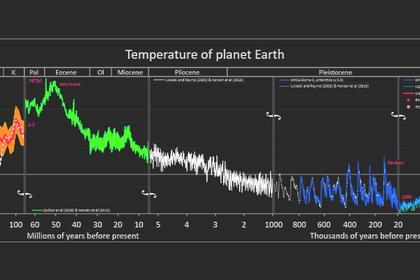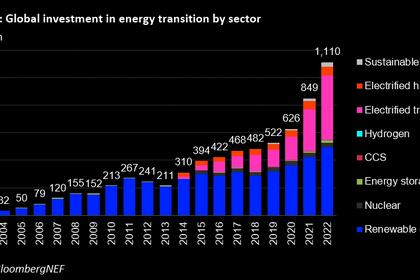It is observed that the temperatures at the base of planetary tropospheres (or in any solid surface) are higher on average than the global mean temperature which solar radiation maintains at some higher altitude often referred to as the “radiating altitude”. This fact puzzled scientists and various attempts have been made to explain the phenomenon.
Climatologists assumed that it must be due to so-called “back radiation” which they think causes heat from the cold atmosphere to the already-warmer surface. They incorrectly add to solar radiation about twice as much additional radiation from what they call “greenhouse gases” these being mostly water vapour and far smaller amounts of carbon dioxide, methane and some others. Their assumption is easily proven wrong with a simple experiment using a single source of radiation and then multiple sources.
Other scientists have assumed the higher temperatures are due to pressure, but high pressure does not maintain high temperatures.
The puzzle was solved and first explained in 2013 in my paper “Planetary Core and Surface Temperatures” that is now on Researchgate. There is compelling supporting evidence throughout the solar system for my “heat creep” hypothesis and the planet Uranus provides an excellent example.
THE PUZZLE IS NOT SOLVED BY RADIATION
The established laws of physics apply for the planet Uranus just as much as for the Earth, Venus and other planets. If we construct a hypothesis based on such laws then we should expect it to be applicable for all the planets.
The Stefan-Boltzmann Law in physics enables us to determine the approximate global mean temperature which solar radiation can achieve at equilibrium, and it is convenient to consider this temperature (which is at most 255K) is found uniformly at the so-called “radiating altitude” a few kilometres above the surface. In contrast, the global mean surface temperature is about 288K. The global mean temperature which could be achieved by direct solar radiation getting through to the Earth’s surface (about 168 watts per square metre) would only support a mean temperature of about 233K at most. In fact, because it is variable, the mean temperature would be even colder, that is, more than 40 Celsius degrees below zero. The surface of Venus receives less than 10% of the direct solar radiation that Earth’s surface receives, and yet the global mean surface temperature of Venus is about 735K.
The Stefan-Boltzmann Law is derived on the assumption that there is only a single source of radiation. As can be shown empirically, it does not apply to the sum of radiative fluxes from different sources under any circumstances. And yet that is the fundamental mistake made by climatologists: they add to the solar radiation about twice the flux supposedly coming from the atmosphere, then they deduct the flux due to non-radiative surface cooling. They then use this net total of about 390 watts per square metre in Stefan-Boltzmann calculations to get the global mean surface temperature of 288K. In fact, the flux radiation is not even an actual measured figure: it is merely calculated so as to get the right answer.
This fundamental error made by climatologists was exposed in 2012 in my peer-reviewed paper “Radiated Energy and the Second Law of Thermodynamics.” The incorrect application of the Stefan-Boltzmann Law may be seen in typical “Energy Budget” diagrams published by climatologists and also by NASA. The downward ‘back radiation’ figure is impossibly high for radiation coming from a little over 1% of the atmosphere. Somehow climatologists excuse the fact that they show far less radiation upwards than downwards coming from these molecules, and they also show more energy coming out of the base of the atmosphere than there is entering from solar radiation at the top.
And yet all the climatology claims about supposed warming by carbon dioxide are based on the assumption that an increase in the downward radiation from carbon dioxide (representing only about 0.04% of the atmosphere) is warming the surface by causing heat transfer by this radiation from the colder regions of the atmosphere to the warmer surface. If they were correct in this assumption then we could deduce from their ‘settled science’ that a rainforest with a high concentration of the main “greenhouse gas” water vapour should be 50 to 80 degrees hotter than a region with average concentrations, other things being equal. Of course that is not the case.
THE PUZZLE IS SOLVED BY GRAVITY
In the above mentioned 2013 paper “Planetary Core and Surface Temperatures” I showed why a planet’s gravity autonomously forms a non-zero temperature gradient. That is why the base of the Earth’s troposphere is warmer than temperatures around 255K at the radiating altitude.
The effect of gravity was first explained in 1876 by a brilliant physicist named Josef Loschmidt. He was the first to make a realistic estimate of the size of air molecules: not a bad feat in those days. Gravity accelerates molecules where there is some downward motion between collisions, and vice versa. Temperature depends on the average speed of these molecules and this leads to it being warmer at the base of a planet’s troposphere for reasons explained in my 2013 paper. Furthermore, we are able to calculate what the temperature gradient ought to be when entropy is at a maximum in the state of thermodynamic equilibrium and in the absence of any radiation or phase change.
The planet Uranus provides what is probably the best approximation in our Solar System to a planetary troposphere relatively free of significant radiation and external effects. That troposphere is about 350 kilometres high and so no solar radiation reaches the base thereof where there is no solid surface and yet temperatures are hotter than Earth. There is also no compelling evidence of any significant overall cooling of Uranus and so the temperature at the base of its troposphere could not be supported by energy coming from the core.
All that the solar radiation can achieve are temperatures around 60K near the top of the Uranus atmosphere. Yet we know that it must be energy which originally came from the Sun which is supporting temperatures at the base of that nominal troposphere and even further down. The temperatures down there have been estimated at about 320K based on measurements made near the top of the atmosphere by Voyager II. Furthermore, those measurements exhibited a temperature gradient very close to the calculated value that is the quotient of the planet’s acceleration due to gravity and the weighted mean specific heat of the gases in the troposphere.
So, as in my 2013 paper, we can now explain how thermal energy that is needed at the base of a planet’s troposphere (in addition to any from direct solar radiation) actually gets down there. Solar radiation on the sunlit side can raise temperatures at higher altitudes, but when it does the state of thermodynamic equilibrium is disturbed. Hence entropy can increase until a new state of maximum entropy is attained. However, because solar energy has been added, the whole thermal profile (that can be represented by a graph of temperature against altitude) will be raised to a new, but parallel position. For this to happen, as explained in my 2013 paper, there must be heat from the higher, cooler regions down to the warmer regions below. And yet this process involving molecular collisions is not violating the Second Law of Thermodynamics. It is downward “free” (or “natural”) convection which I call “heat creep” for short, and it is the only possible explanation for the required thermal energy which, in the case of Earth, tops up the insufficient thermal energy absorbed from direct solar radiation that reaches to the surface.
The temperature gradient is reduced in magnitude by the opposing temperature-levelling effect of radiation back and forth between identical molecules of so-called “greenhouse” gases at different altitudes. On Earth the gradient can be reduced from 9.8 degrees per kilometre to around 6 degrees per kilometre where there is a significant amount of water vapour. Some of this reduction can also be caused by the release of latent heat during phase change.
Observations for other planets such as Venus also support what I shall call my “heat creep hypothesis.” It represents the complete opposite of conventional thinking that assumes planets are all cooling off from an original very hot molten state. That cooling off no longer occurs because now planets are kept at current temperatures by this inward “heat creep” that transfers solar energy probably all the way to the core. That is because, as Joseph Loschmidt explained, gravity establishes the stable equilibrium temperature gradient in solids, liquids and gases.
So now we can explain why the core of the Moon is more than 1,000 degrees hotter than the hottest location on its surface. And we can explain why there is a steeper temperature gradient in boreholes in Earth’s crust than in the mantle, that being because the effective gravity reduces approaching the core and specific heat increases at higher temperatures. Temperatures are anchored at the radiating altitude and from there, going towards the core, they increase in accord with the expected temperature gradient at each altitude or depth.
Temperatures are not being anchored by those in the core or at the surface, for, if that were the case then there would be an infinitesimal probability that, for all planets and satellite moons, those temperatures would follow the expected thermal profile with the calculated gradient all the way up to the radiating altitude where such temperatures would then be what we can calculate from the incident solar radiation.
Climatologists have assumed a very incorrect hypothesis which ignores the gravitationally-induced temperature gradient and also assumes, quite incorrectly, that radiative fluxes from the Sun and the atmosphere can be added and have the effect of a much hotter Sun. Some other scientists have assumed that high pressure maintains high temperatures, but that cannot be deduced from the Ideal Gas Law.
It is not hard to see why these other explanations relating to radiation or pressure are incorrect because a location on the equator of any planet with a solid surface (and an atmosphere) inevitably cools while it is on the dark side. So how could radiation or pressure on the sunlit side just happen to warm it back up by the same amount that it cooled? Clearly the only stabilizing process is the temperature which the solar radiation can, and does, maintain at the radiating altitude at equilibrium.
And so now at last we have what must be the correct explanation for the required heat needed to maintain temperatures at the base of planetary tropospheres well above the temperature which solar radiation maintains at the radiating altitude.
So why does the climate change? It is most likely due to variations in cloud cover because clouds reflect about 20% of the incident solar radiation back to space. Virtually all climate change in the last few thousand years can be explained if that 20% figure varied just between 19% and 21%. It may well do so because we now know that cosmic rays assist cloud formation and that the intensity of cosmic rays can be affected by solar activity which in turn affects the size of the heliosphere. As the heliosphere expands it acts like a shield and so fewer cosmic rays reach the Earth. I postulate that the planets can also alter the paths of cosmic rays and this may explain how the apparent natural climate cycles are regulated. There appear to be two main cycles that are relevant, the first being about 1000 years and likely to reach a peak this century, and the second being a superimposed 60 year cycle that last peaked around 1998. I predicted back in 2011 (on my website http://earth-climate.com)that there would be level temperatures until at least 2027 due to the net effect of these two cycles. Satellite data appearing early each month at http://drroyspencer.com indicates no significant warming since 1998. Land-based temperature data appears to have been manipulated.
For further information please visit my second climate website http://climate-change-theory.com, watch the linked videos and download my first three papers at https://ssrn.com/author=2627605. There are other papers and articles that have been submitted to Researchgate and also on LinkedIn.
-----

